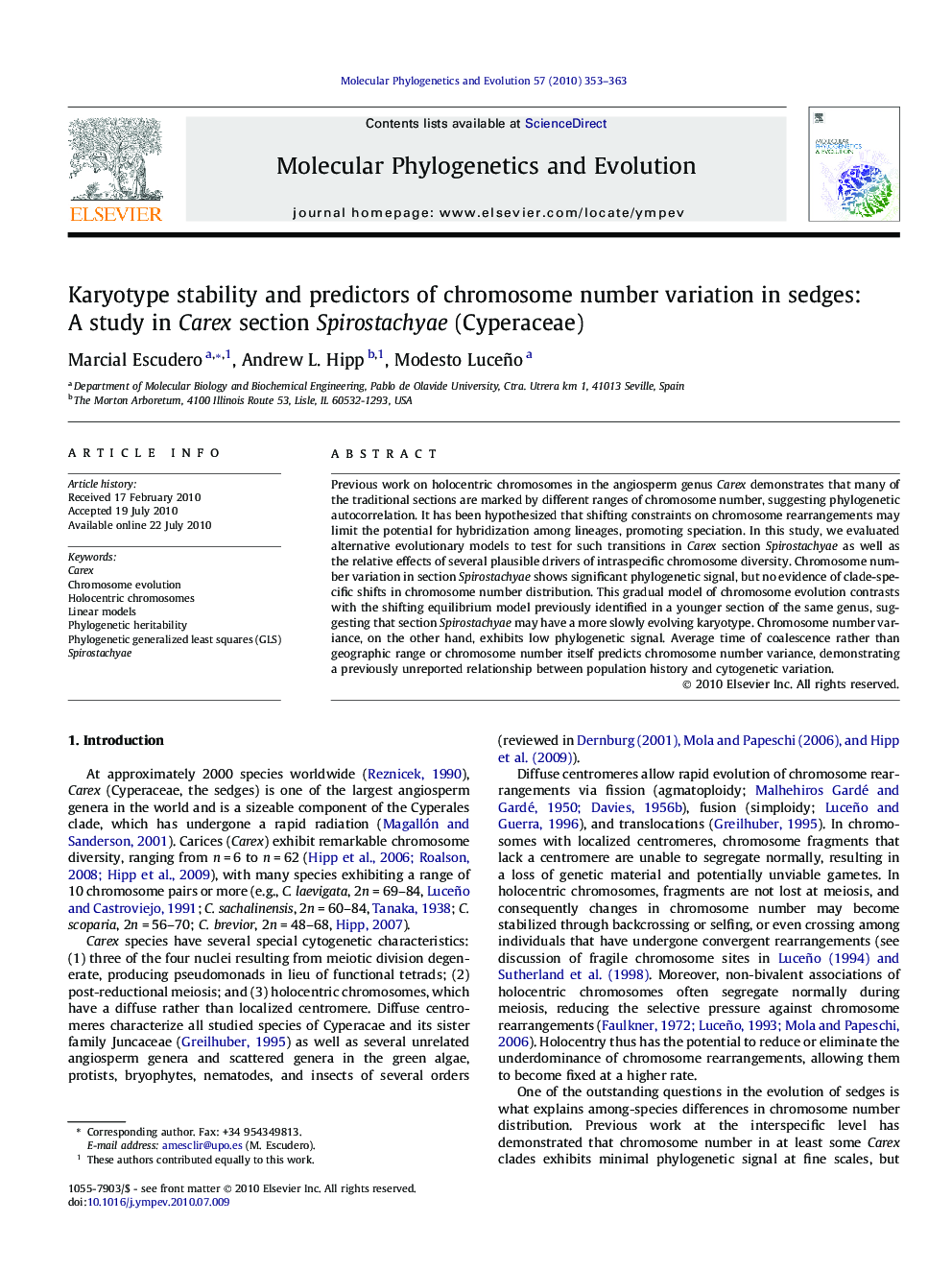| Article ID | Journal | Published Year | Pages | File Type |
|---|---|---|---|---|
| 5920875 | Molecular Phylogenetics and Evolution | 2010 | 11 Pages |
Previous work on holocentric chromosomes in the angiosperm genus Carex demonstrates that many of the traditional sections are marked by different ranges of chromosome number, suggesting phylogenetic autocorrelation. It has been hypothesized that shifting constraints on chromosome rearrangements may limit the potential for hybridization among lineages, promoting speciation. In this study, we evaluated alternative evolutionary models to test for such transitions in Carex section Spirostachyae as well as the relative effects of several plausible drivers of intraspecific chromosome diversity. Chromosome number variation in section Spirostachyae shows significant phylogenetic signal, but no evidence of clade-specific shifts in chromosome number distribution. This gradual model of chromosome evolution contrasts with the shifting equilibrium model previously identified in a younger section of the same genus, suggesting that section Spirostachyae may have a more slowly evolving karyotype. Chromosome number variance, on the other hand, exhibits low phylogenetic signal. Average time of coalescence rather than geographic range or chromosome number itself predicts chromosome number variance, demonstrating a previously unreported relationship between population history and cytogenetic variation.
